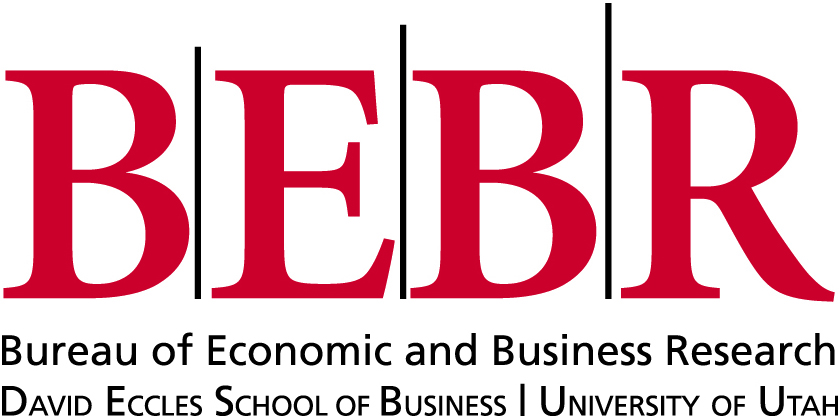
– Hispanic mortgage applications were rejected 27.4 percent of the time, compared to a rejection rate of 14.2 percent for non-Hispanic white applicants
– High-earning Hispanic mortgage applicants were rejected at a higher rate than lower-income non-Hispanic white applicants
July 30, 2013 – Researchers at the Bureau of Economic and Business Research at the University of Utah’s David Eccles School of Business analyzed data associated with the Home Mortgage Disclosure Act, or HMDA, and found wide racial disparities when it comes to mortgage applications and outcomes in Salt Lake County and Salt Lake City.
Published in BEBR’s latest issue of Utah Economic and Business Review, the HMDA data from 2006 through 2011 for home mortgages in Salt Lake County shows that 27.4 percent of Hispanic applicants were denied mortgages, compared to 14.2 percent of non-Hispanic white applicants.
BEBR researchers also found that the disparity in mortgage outcomes persisted even when income differences were taken into account. The non-Hispanic white mortgage approval rates were near or exceeded 70 percent across all income levels. Hispanic approval rates did not reach 60 percent at any income level—even for those reporting an income in the top 10 percent of the entire Salt Lake County applicant pool, a number that comes in at greater than $173,000 per year.
The HMDA requires most financial institutions to report mortgage loan data annually, and BEBR’s study is part of the Salt Lake County Regional Analysis of Impediments, a fair-housing report prepared by BEBR for the HUD Sustainable Communities Grant.
In addition to examining the disparities between mortgage applications and acceptances, the study examined the reported incomes of non-Hispanic white and Hispanic applicants. Both groups showed more applicants from lower-income brackets after the peak of the housing boom from 2006 to 2007.
“Despite the shifting income distributions during the ensuing housing bust, the distributions of mortgage denials and approvals across income levels have remained commensurate with those of the overall applicant pool for both groups,” said Darius Li, a BEBR research analyst. “In other words, lower-income applicants are not receiving a disproportionately larger share of mortgage denials,” suggesting that the disparity in mortgage outcomes cannot be attributed to the inherent income differences between non-Hispanic whites and Hispanics.
Among other notable findings outlines in BEBR’s study, titled “Disparities in Salt Lake County and Salt Lake City Mortgage Outcomes and Lending Practices”:
- The overall countywide mortgage application volume decreased by 75 percent between 2006 and 2011. During that time, the Hispanic share of the applicant pool decreased from 15 percent during the housing boom of 2006-2007 to 8 percent in 2010-2011.
- Beyond disparities in mortgage-application approvals, high-interest lending practices reflected another challenge for Hispanic applicants. While Hispanic applicants represented 9.5 percent of all approved loans from 2006 to 2011, they received a disproportionate 22.8 percent of high-interest loans in Salt Lake County. “The prevalence of high-interest loans can serve as a proxy for housing stability, since such loans could be precursors to foreclosures,” said James Wood, BEBR’s director. “This extensive mining of HMDA data has never been done in Utah. The analytical insight gleaned from the HMDA data not only quantifies lending practices, but also adds another dimension in analyzing regional housing impediments.”
- Many barriers to housing opportunity occur prior to the mortgage-approval process, as prospective home buyers exhibit geographic self-selection based on housing affordability. The data shows that roughly 80 percent of prospective Salt Lake City non-Hispanic white applicants selected the more affluent east-side neighborhoods, while nearly 80 percent of Hispanics selected properties in the River District, encompassing Salt Lake City neighborhoods west of I-15.
While the HMDA data does indicate large disparities in mortgage outcomes, BEBR researchers warn against drawing any immediate conclusions due to the lack of variables such as employment status and credit scores in the data they examined. But changes in reporting requirements could enhance the analysis of HMDA data in the near future.
“The Dodd-Frank Act augmented HMDA reporting requirements to include credit scores, applicant age and more detailed information on loan rates,” said Li. “This will allow us to better analyze and model future releases of HMDA data to provide a more detailed understanding of lending practices.”
About the Bureau of Business and Economic Research
Established in 1932, the Bureau of Economic and Business Research (BEBR) is an applied research center in the David Eccles School of Business at The University of Utah. BEBR’s mission is to conduct and support research related to the structure of the Utah economy, its resources and its potential for expansion. BEBR also analyzes the economic and demographic impacts of economic events and policy initiatives on local and regional economies, provides advice on economic issues and conducts regional economic analysis.
